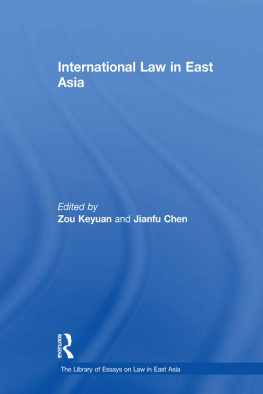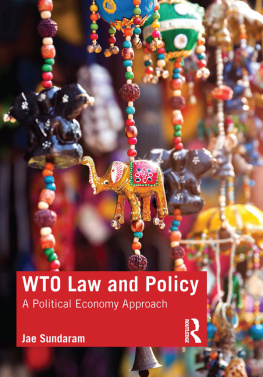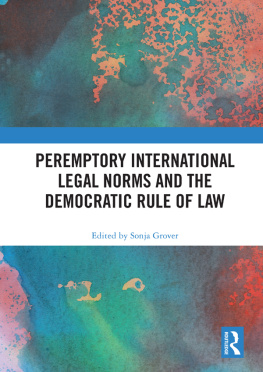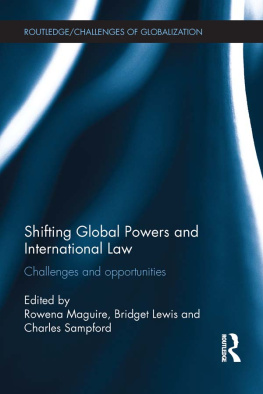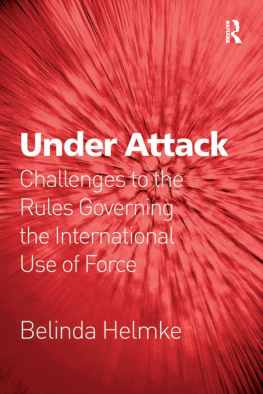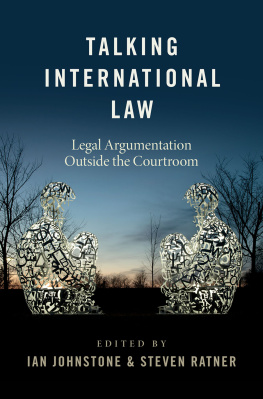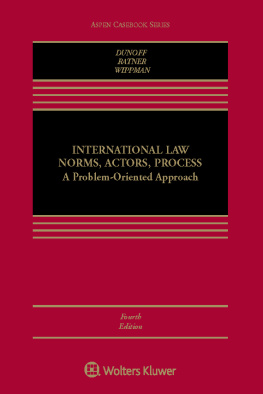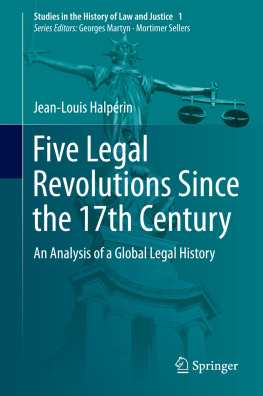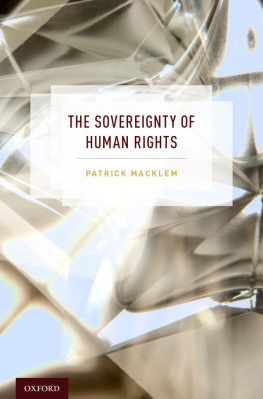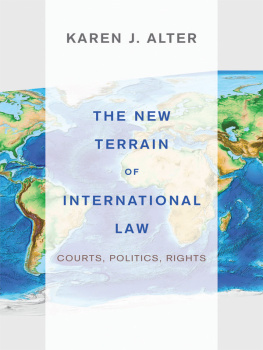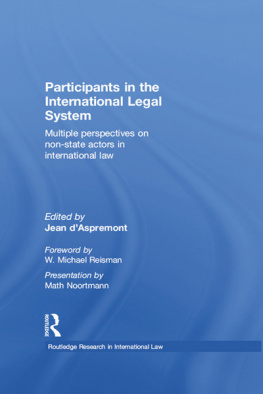FOUNDATIONS OF PUBLIC INTERNATIONAL LAW
General editors: MALCOLM EVANS AND PHOEBE OKOWA
THE MAKING OF INTERNATIONAL LAW
The Making of International Law
ALAN BOYLE
and
CHRISTINE CHINKIN


Great Clarendon Street, Oxford OX2 6DP
Oxford University Press is a department of the University of Oxford.
It furthers the Universitys objective of excellence in research, scholarship,
and education by publishing worldwide in
Oxford New York
Auckland Cape Town Dar es Salaam Hong Kong Karachi
Kuala Lumpur Madrid Melbourne Mexico City Nairobi
New Delhi Shanghai Taipei Toronto
With offices in
Argentina Austria Brazil Chile Czech Republic France Greece
Guatemala Hungary Italy Japan South Korea Poland Portugal
Singapore Switzerland Thailand Turkey Ukraine Vietnam
Oxford is a registered trade mark of Oxford University Press
in the UK and in certain other countries
Published in the United States
by Oxford University Press Inc., New York
A. E. Boyle and C. Chinkin, 2007
The moral rights of the author have been asserted
Database right Oxford University Press (maker)
Crown copyright material is reproduced under Class Licence
Number C01P0000148 with the permission of OPSI
and the Queens Printer for Scotland.
All rights reserved. No part of this publication may be reproduced,
stored in a retrieval system, or transmitted, in any form or by any means,
without the prior permission in writing of Oxford University Press,
or as expressly permitted by law, or under terms agreed with the appropriate
reprographics rights organization. Enquiries concerning reproduction
outside the scope of the above should be sent to the Rights Department,
Oxford University Press, at the address above
You must not circulate this book in any other binding or cover
And you must impose this same condition on any acquirer
ISBN 978-0-19-921379-5
Printed in the United Kingdom by
Lightning Source UK Ltd., Milton Keynes
Series Editors Preface
The importance of understanding how international law comes into being is too obvious to dwell upon. However, this subject is usually approached in a rather formalistic fashion, focusing on the sources of international law as traditionally understood with various non-traditional modes of norm generation added as something of an afterthought. Alan Boyle and Christine Chinkin approach the generation of international law from a wholly different perspective, focusing on the actors, systems, and processes by whom and through which international law is generated rather than upon the forms into which that law is categorised. This approach unites norm creation with the interpretation, application, and development of international law, resulting in a more subtle, but far richer, vision of the making of international law. As such, this volume exemplifies the ambition of the Foundations of Public International Law series, which seeks to offer insightful expositions of key elements of international law which will inform and stimulate debate. There is no doubt that this agenda-setting work will do both.
Malcolm D. Evans
Phoebe N. Okowa
October 2006
Preface
This is a study of the principal multilateral processes and law-making tools through which contemporary international law is made. It does not seek to give an account of the traditionaland untraditionalsources and theories of international law, but rather to identify the processes, participants and instruments employed in the making of international law. It accordingly examines some of the mechanisms and procedures whereby new rules of law are created or existing rules are amended or abrogated. It concentrates on the UN, other international organisations, diplomatic conferences, codification bodies, NGOs and courts. Some of these bodies take decisions by majority vote, but more often consensus law-making has become the norm. We examine the implications of this development in an enlarged international community where law-making is no longer the exclusive preserve of states.
Every society perceives the need to differentiate between its legal norms and other norms of social, economic and political behaviour. But unlike domestic legal systems where this distinction is typically determined by constitutional provisions, the decentralised nature of the international legal system makes this a complex and contested issue. Moreover, contemporary international law is often the product of a subtle and evolving interplay of law-making instruments, both binding and non-binding, and of customary law and general principles. Only in this broader context can the significance of so-called soft law and multilateral treaties be fully appreciated.
An important question posed by any examination of international law-making structures is the extent to which we can or should make judgments about their legitimacy and coherence, and if so in what terms. Put simply, a law-making process perceived to be illegitimate or incoherent is more likely to be an ineffective process. From this perspective, the assumption of law-making power by the UN Security Council offers unique advantages of speed and universality, but it also poses a particular challenge to the development of a more open and participatory process observable in other international law-making bodies. The range and diversity of these bodies provide another challenge to the coherence and systemic character of international law. While the specialised agencies, commissions and programmes of the United Nations illustrate the value of specialisation and expertise, they also contribute to the fragmentation of international law-making as a whole, through what Koskenniemi calls functional differentiation. The risk is that there may then be competition between different subsystems of law and the values promoted by different international law-making institutions. Courts provide the ultimate affirmation for law-making undertaken by international organisations, treaty conferences and the International Law Commission. They can bring some measure of coherence to this fragmented institutional setting, insofar as they have to adjudicate on the inter-relationship of different norms, but they can do so only sporadically and are dependent on the establishment of jurisdiction. Moreover, the proliferation of international judicial tribunals creates its own problems. Most of these tribunals exercise specialised and limited jurisdiction outside any hierarchical structure and they do not necessarily have power to apply international law as a whole.
Understanding the character of contemporary international law-making is thus a complex and subtle undertaking. We do not pretend to have covered all of its aspects comprehensively. Our interest in the topic and some of our thinking reflect our own special interests, as well as the LLM teaching we both undertake in the subjects covered by this book. Our material has been chosen to illustrate the main themes, not to provide an encyclopedic treatment. A great many people in international organisations, NGOs, the International Law Commission and the United Kingdom Foreign and Commonwealth Office have been especially helpful and encouraging to us during our research for this book; their willingness to talk about international law-making and the experience of their own organisations provided us with a wealth of material, not all of which we have been able to use. Nevertheless, we cannot claim to offer the reader more than a selective snapshot of contemporary law-making processes. Their diversity and dynamics provide ample scope for further study and different points of view, but for anyone who reads this book from beginning to end the importance of understanding multilateral law-making in todays world is plain to see. We hope that something of our enjoyment in thinking about the topic has survived the writing.
Next page

